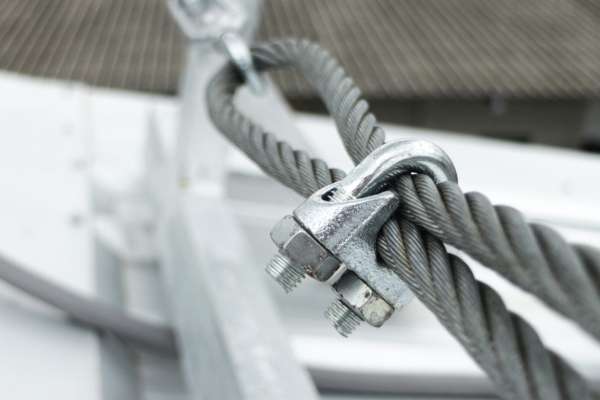100 %

Oct 5,2023
When it comes to overhead lifting, the importance of selecting the right rope material cannot be overstated. Whether you're lifting heavy machinery in a manufacturing plant or hoisting equipment at a construction site, the choice of rope material plays a critical role in ensuring safety and efficiency. In this comprehensive guide, we will delve into the world of synthetic rope materials and help you understand which one is best suited for your overhead lifting needs.
Nylon ropes are renowned for their strength and durability. They have excellent resistance to abrasion and are known for their ability to absorb shock loads, making them suitable for applications where sudden impacts are a concern. Additionally, nylon ropes have a relatively high stretch factor, which can be advantageous in situations where some flexibility is required.
However, it's essential to note that nylon ropes tend to lose strength when exposed to moisture, so they may not be the best choice for outdoor or marine applications. They are commonly used in indoor overhead lifting scenarios due to their robustness and shock-absorbing properties.
Polypropylene ropes are lightweight and float on water, making them an ideal choice for marine and water-based lifting operations. They are also resistant to most chemicals, which can be advantageous in industrial settings. However, polypropylene ropes have relatively lower strength compared to nylon or polyester, so they are best suited for lighter lifting tasks.
Polyester ropes strike a balance between strength and flexibility. They offer excellent resistance to UV rays, moisture, and chemicals, making them suitable for both indoor and outdoor applications. Polyester ropes have minimal stretch, which can be beneficial when precise control is required during lifting.
Dyneema ropes, made from ultra-high-molecular-weight polyethylene (UHMWPE), are incredibly strong yet lightweight. They are known for their exceptional strength-to-weight ratio, making them the go-to choice for heavy-duty lifting operations. Dyneema ropes also exhibit minimal stretch, providing precise control during lifting.
The first consideration when selecting a rope material for overhead lifting is ensuring it can handle the expected load capacity. Each rope material has its own strengths, and you must match the rope's strength with the load requirements. Additionally, minimizing the weight of the rope itself is crucial for efficient lifting, as it can reduce the overall load capacity.
The environment in which you'll be conducting overhead lifting plays a significant role in choosing the right rope material. Nylon, for example, is not the best choice for outdoor applications due to its susceptibility to moisture. Polyester, on the other hand, excels in outdoor environments due to its resistance to UV rays and moisture.
Consider the flexibility and stretch factor of the rope material. Nylon's stretch can be beneficial when absorbing shock loads, but it may not be suitable when precision is essential. Polyester and Dyneema ropes have minimal stretch, offering better control during lifting operations.
While it's tempting to choose the most expensive and robust rope material, budget considerations are essential. Evaluate the initial costs and long-term benefits of each material, keeping in mind that a high-quality rope may prove more cost-effective in the long run due to its durability and longevity.
Ensuring safety during overhead lifting operations is paramount. Here are some critical safety guidelines to follow:
Regularly inspect synthetic ropes for signs of wear, tear, or abrasions. Replace any damaged ropes promptly. Proper storage and handling practices are essential to prevent premature wear.
Use secure and reliable knot techniques when securing loads to the rope. For critical applications, professional splicing is recommended to ensure the integrity of the rope.
Distribute the load evenly across the rope to prevent overloading and minimize stress. Understand how different angles affect lifting operations and make the necessary adjustments.
Adhere to industry and safety standards when conducting overhead lifting. Ensure compliance with local regulations and guidelines to minimize risks and accidents.
Learning from real-life applications can provide valuable insights into the choice of synthetic rope materials. Success stories and lessons learned from past projects can help you make informed decisions when selecting the right rope for your overhead lifting needs.
In the world of overhead lifting, choosing the best synthetic rope material is not a one-size-fits-all decision. It requires a careful evaluation of load requirements, environmental conditions, flexibility, and budget considerations. By following safety guidelines and learning from real-life applications, you can ensure safe and efficient overhead lifting operations. Remember, the right rope material can make all the difference in achieving success in your lifting projects.